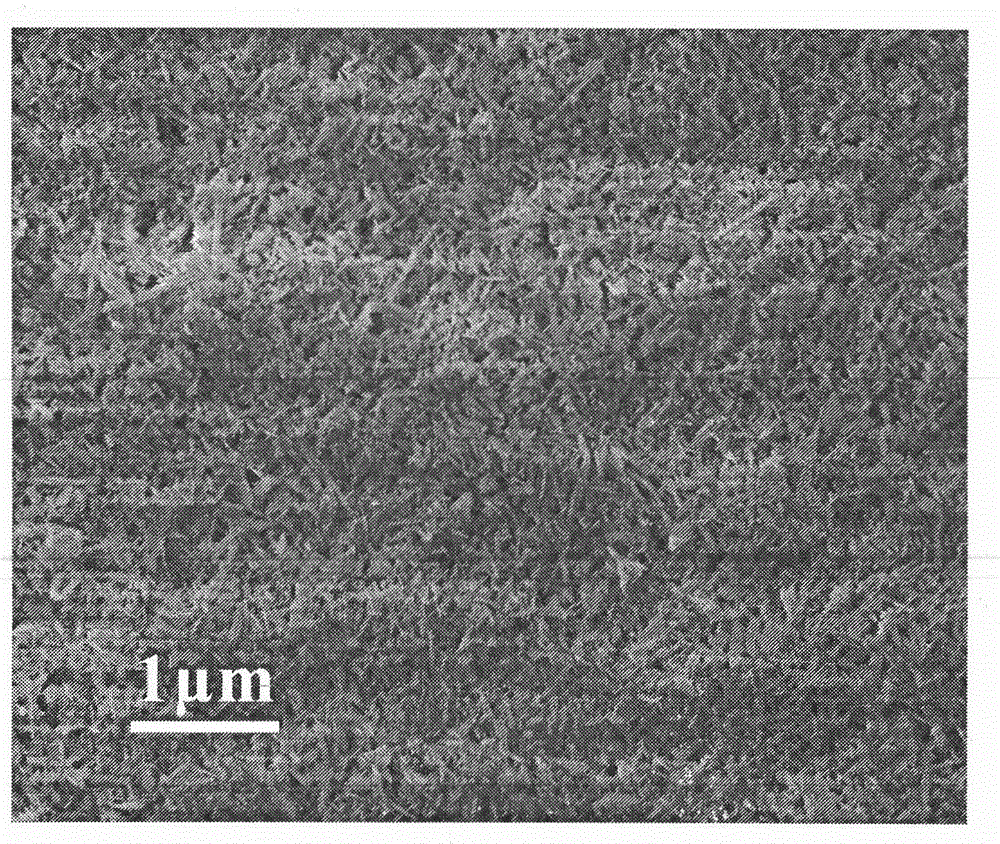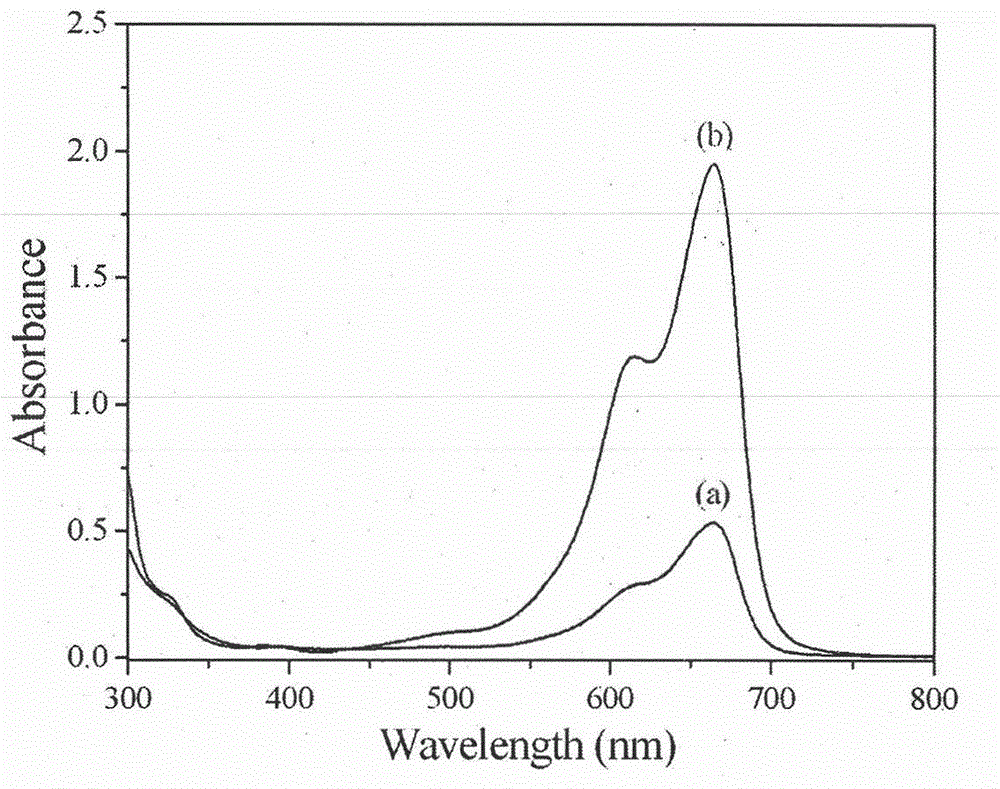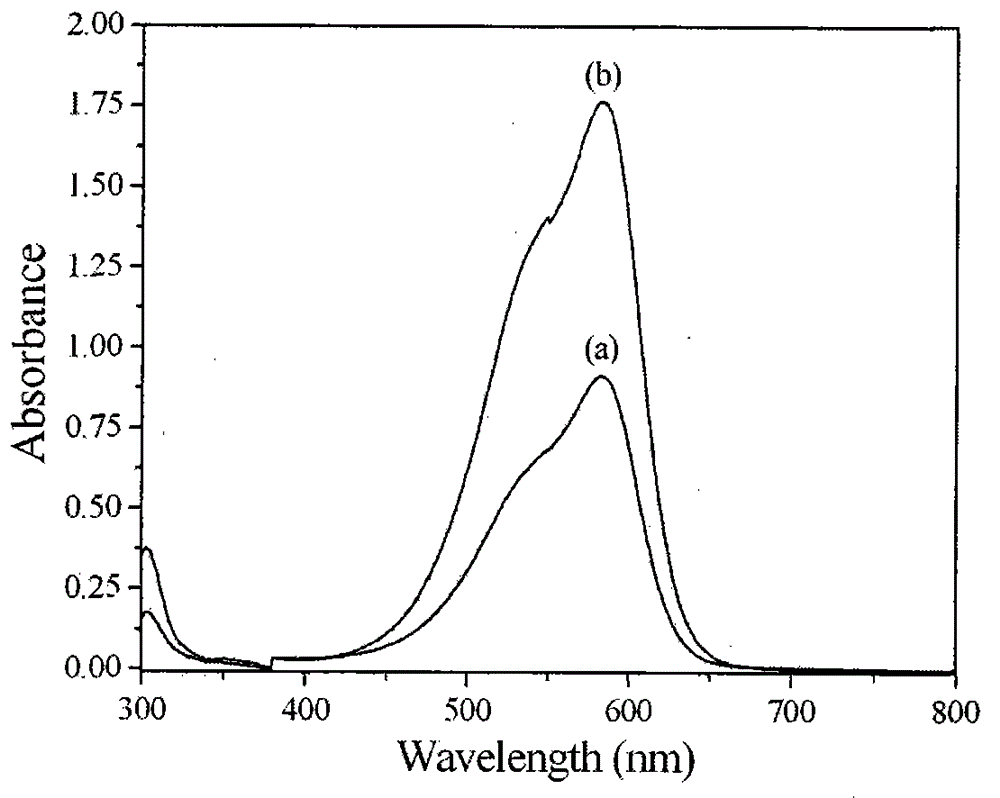Zinc vanadate nanorod composite paint
A composite coating and nanorod technology, applied in the coating and other directions, to achieve the effects of good stability, non-toxic cost and high activity
- Summary
- Abstract
- Description
- Claims
- Application Information
AI Technical Summary
Problems solved by technology
Method used
Image
Examples
Embodiment 1
[0020] Embodiment 1: determine that the mass percent of zinc vanadate nanorod composite paint is composed as follows: zinc vanadate nanorod 34%, styrene-acrylic emulsion 18.9%, water 35%, nano-alumina 10%, alcohol ester-12 0.1%, polyurethane 0.5%, 10% sodium hexametaphosphate aqueous solution 0.5%, tributyl phosphate 0.5%, ethylene glycol 0.5%.
Embodiment 2
[0021] Embodiment 2: determine that the mass percent of zinc vanadate nanorod composite paint is composed as follows: zinc vanadate nanorod 39%, styrene-acrylic emulsion 21.05%, water 30%, nano-alumina 8%, alcohol ester-12 0.1%, polyurethane 0.5%, 10% sodium hexametaphosphate aqueous solution 0.6%, tributyl phosphate 0.6%, ethylene glycol 0.6%.
Embodiment 3
[0022] Embodiment 3: determine that the mass percent of zinc vanadate nanorod composite paint is composed as follows: zinc vanadate nanorod 36%, styrene-acrylic emulsion 16.9%, water 33%, nano-alumina 12%, alcohol ester-12 0.1%, polyurethane 0.5%, 10% sodium hexametaphosphate aqueous solution 0.5%, tributyl phosphate 0.5%, ethylene glycol 0.5%.
PUM
| Property | Measurement | Unit |
|---|---|---|
| length | aaaaa | aaaaa |
| diameter | aaaaa | aaaaa |
| size | aaaaa | aaaaa |
Abstract
Description
Claims
Application Information
 Login to View More
Login to View More - R&D
- Intellectual Property
- Life Sciences
- Materials
- Tech Scout
- Unparalleled Data Quality
- Higher Quality Content
- 60% Fewer Hallucinations
Browse by: Latest US Patents, China's latest patents, Technical Efficacy Thesaurus, Application Domain, Technology Topic, Popular Technical Reports.
© 2025 PatSnap. All rights reserved.Legal|Privacy policy|Modern Slavery Act Transparency Statement|Sitemap|About US| Contact US: help@patsnap.com



